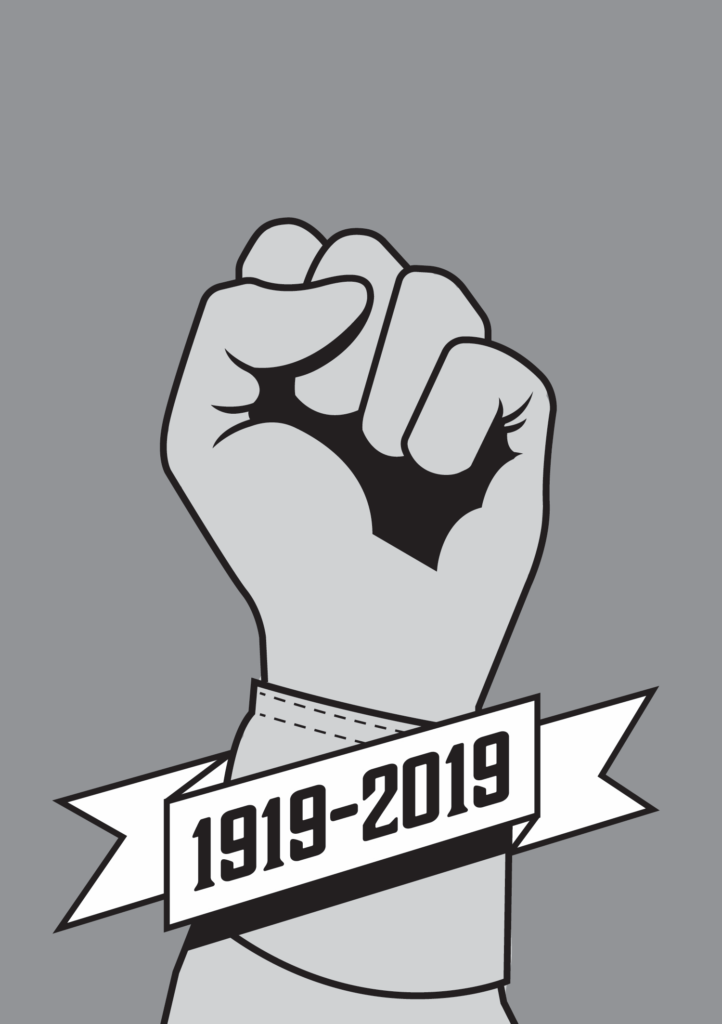Even after a hundred years, the Seattle General Strike holds a place in history as inspiring change. Uniting organized labor on Feb. 6, 1919, in support of shipyard workers, it remained peaceful and ended up greatly influencing labor laws years later.
At the time, with the support of Seattle Central Labor Council, 101 unions and 65,000 workers crowded City Hall on Feb. 6 1919. Over a quarter of the city went on strike, and yet they had organized a strike committee that still allowed the city to run.
Events all over the city commemorated the centennial including a discussion group in the Seattle Public Library hosted by the Puget Sound Advocates for Retirement Action (PSARA) and led by the Pacific Northwest Labor History Association (PNLHA).
In 1919, Seattle had a population of a couple hundred thousand that consisted of many labor workers. With very few laws protecting labor, the most prominent worker union at the time was the American Federation of Labor (AFL), which only protected skilled craft workers. It didn’t protect unskilled workers, instead dividing the workers by craft and qualification.
Therefore, the unskilled workers, including Seattle’s shipyard workers, joined the radical Industrial Workers of the World (IWW) union. The strike began as a result of unskilled workers not receiving raises which they felt they had deserved after World War I.
“We see it today as an incredible act of solidarity and workers being able to control their lives and the city, which is true,”Tom Lux, the president of the PNLHA, said. “But there is also the other side, a lot of worker oppression that came down and it wasn’t just because of the strike. It was a national phenomenon.”
Unlike the Everett Massacre, which had occurred a few years prior in 1916 and was a conflict between the IWW and the authorities, the Seattle General Strike was peaceful. Although the mayor had two battalions of U.S. Army Troops positioned to stop the strike, the strike still ended peacefully six days later.
“The Seattle labor movement was a little different and more radical than the rest of the country,” Lux said. “There was some IWW influence in the labor movement, the leader of the Labor Council Duncan welcomed all workers which wasn’t always the case anywhere else.”
Ultimately, the shipyard workers still had not gotten their raise, and a dissention rose again. Although this could’ve deemed the strike to failure, University of Washington Political Science Professor, Michael McCann explained how it happened differently.
“On one hand, the strike could be seen as a failure in the simple instrumental sense about [whether they got] their increases and all that,” McCann said. “But…they proved that they could run Seattle, that they could develop cooperatives that would provide services or coordinate among themselves. It was purely bottom-up and democratic and didn’t need a top- down rich people kind of thing.”
This past year, teacher strikes across the state took a forefront as renegotiations were taking place. Jessica Bonebright, co-president of the PSARA, explained why teachers unions are still prominent and impactful today, in comparison to unions in large companies.
“Teachers unions, like so many public sector unions, really have a target now because the organizations see that as labors’ strength. There’s very often a corporate mentality of ‘squish those unions brutally,’ whereas in the public sector, these people who are trying to squish the unions still have to turn around and win an election,” Bonebright said. “And so, the public sector unions have had in some ways a little easier time.”
Today, corporations have actively tried to prevent something like the Seattle General Strike from happening ever again by placing a clause in contracts prohibiting union members from supporting other unions’ workers’ strikes. That being said, McCann noted that the impact of the Seattle General Strike could remain apparent even today.
“I think it’s important to know the history of workers acting together to try and advance social justice and collective welfare…And to take inspiration but also learn from how it’s done and what the possibilities are.”
Rania may be reached at
rkaur@su-spectator.com









